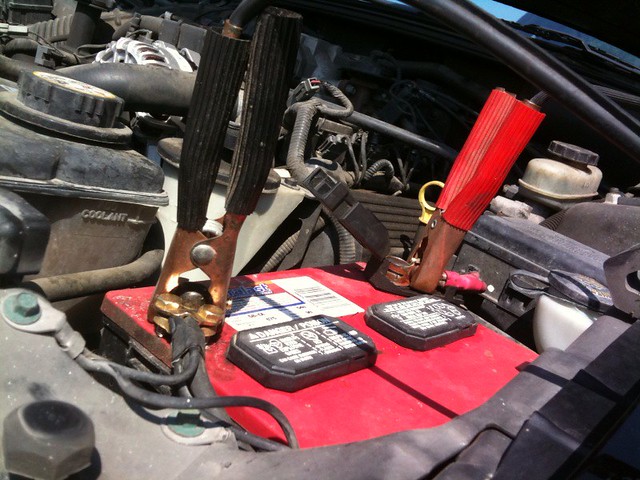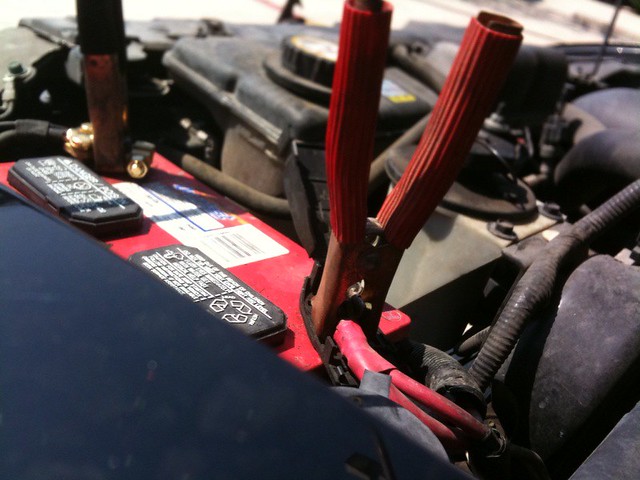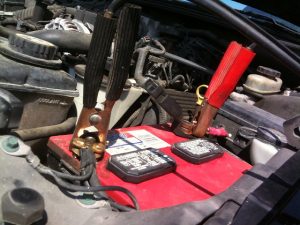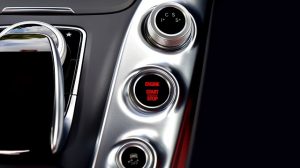Contents
Starter cables: definition and description
How to choose jumper cables?
How to use jumper cables?
Precautions to take before using jumper cables
Jump leads are a great help when your vehicle refuses to start because of a discharged battery. Here is an overview of this useful and affordable car accessory, which you should always keep in the trunk of your car.
Starter cables: definition and description
Definition
A jumper cable, sometimes known as a “jumper clamp,” is a car accessory that connects the terminals of a dead battery to those of a working battery. Its job is to provide electrical power to a discharged battery so that you can start a disabled vehicle.
It’s important to remember that if your vehicle still won’t start after utilizing the jump starters or if your battery won’t hold a charge, you should replace it as soon as possible.
Description
This device is made up of two cables with clamps on each end. Each cable has a copper wire covered with a sheath: one is red, and the other is black. The purpose of these colours is to differentiate the poles (negative and positive). There are, therefore, four clamps. The jumper wires are usually between 3 and 6 meters long.
Each clamp has an insulating grip that matches the colour of the sheathing.
Good to know: Store the jumper cables in a specific case or a suitable cover to protect them.
How to choose jumper cables?
The choice of jumper cables depends on the vehicle’s engine (gasoline or diesel). To choose the right jumper cables for your car, you should take into account the information on the battery:
- the current expressed in amperes (A);
- the car’s voltage is expressed in volts (V), usually 12 or 24 V.
- the capacity of a battery (amperes/hr).
These indications must also be included on the packaging of the jumper cables. Depending on the amperage of the battery, the corresponding cable sections are as follows:
- less than 200 A: 10 mm²;
- between 200 and 300 A: 16 mm²;
- between 300 and 600 A: 25 mm²;
- between 600 and 700 A: 35 mm²;
- from 700 A: 50 mm².
It’s worth noting that you can use the starter clamps with 12 V, 24 V, or both voltages.
How do I use the jumper cables?

Before starting your vehicle with the right cables, you need to have a second vehicle with the same engine or find a car owner willing to help you.
Follow the steps once you’ve found the correct person.
Place the two vehicles next to each other or face to face so that the wires are long enough to connect both batteries.
Turn off the engine.
Ensure that both vehicles are neutral and that the parking brake is engaged.
Open the two covers, then remove the protections covering the terminals of each battery.
Connect one black clamp to the recovery battery’s negative (-) terminal and the second black clamp to the disabled vehicle’s ground, then connect the red clamps to each battery’s positive (+) terminals.
Start the recovery vehicle, then turn on the ignition of the disabled car. As soon as the engine starts, let it idle for a few minutes, then accelerate in fits and starts. A few key turns may be required.
Disconnect the jumper cables and replace the battery terminal covers without turning off the engine. You must perform this operation on both vehicles.
Good to know: If the vehicle still does not start despite several attempts with the jumper cables, it may be a connection problem, a jumper clamp that is not adapted to the type of battery, or even a battery or alternator failure.
Precautions to take before using jumper cables
Before using jumper cables to repair a vehicle, you must take certain precautions.
The two batteries that must be linked must be from the same vehicle. The electronic systems will not be harmed as a result of this.
Similarly, the two batteries must have the same voltage: a substantially greater voltage on one of the batteries can destroy the car’s electronic components. As a result, unless the starting clamps are constructed explicitly for both types of voltage, connecting a 12 V battery to an equivalent battery (12 and 24 V) would be beneficial.
Some batteries are equipped with an indicator to check the condition of the internal fluid. You can see if it is frozen. Never try to start a vehicle with a frozen battery because it could explode.
Connect the two black clips to the two negatives (-) poles as little as possible. Since a battery produces hydrogen, an improper connection could induce sparks, which could cause the battery to explode or fire. As a result, it’s recommended to use a bolt or other metal part to connect the failed vehicle’s black clamp to the bare ground (rather than the battery).
Good to know: Using the incorrect jumper wires can result in a short circuit, resulting in a serious accident. This occurs when too much current is transmitted from one battery to another. If you’re not comfortable with mechanics, call your service center. A professional will come right away to repair your vehicle with a self-starter, a device that costs only about a hundred dollars.





One thought on “How to Choose Your Starter Cables”